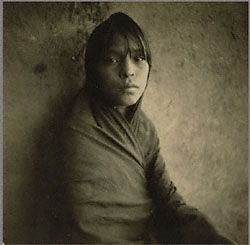
 |
 |
Taos, New Mexico, 1931
© Oakland Museum of California, the City of Oakland
|
 |
 |
Lange began her professional career in 1918 by opening her own portrait photography
business in San Francisco. It was successful enough in the 1920s to support her first
husband, painter Maynard Dixon (American, 1875–1946), and their two sons. Dixon's work
featured a desert palette and Western subjects. Lange often accompanied him to the
Southwest where he introduced her to the landscape and people he had drawn since
1900. Attempting some of her own work there, she applied her talent for portraiture
to a new community.
|
 |
 |
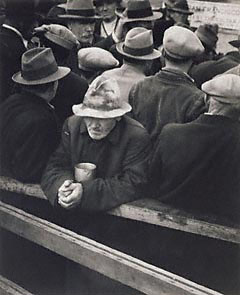
 |
 |
White Angel Breadline, San Francisco, 1933
© Oakland Museum of California, the City of Oakland
|
 |
 |
|
 |
|
For her first one-person show, in 1934, Lange exhibited her recent pictures of
political demonstrations, strike rallies, labor leaders, and breadline recipients.
Paul Taylor (American, 1895–1984), an economics professor and labor historian, saw
her show and asked her to join him in working for the state relief agency. Out of
this came a second marriage to Taylor (she divorced Maynard Dixon in 1935) and a
job working for the U.S. government under Franklin D. Roosevelt's New Deal
Administration.
|
 |
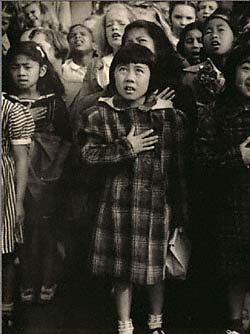
 |
 |
Pledge of Allegiance, Raphael Weill Elementary School, San Francisco, April 1942
|
 |
 |
A few months after this country entered World War II, Lange received another federal
commission from the government's War Relocation Authority (WRA) to photograph the forced
internment of thousands of Japanese Americans. Following the bombing of Pearl Harbor,
President Roosevelt issued Executive Order 9066 calling for the assembly and internment
of 110,000 people of Japanese descent in the spring of 1942. This image was made two weeks
before Japanese Americans in the San Francisco area were to be assembled. As far as Lange
was concerned, her assignment included documenting the life of ordinary Japanese Americans
before they were interned as well as after their imprisonment.
|
 |
 |
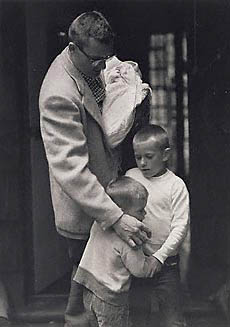
 |
 |
Third Born/John Dixon, Daughter Lisa, Sons Gregor and Andrew, Berkeley, California, 1958
© Oakland Museum of California, the City of Oakland
|
 |
From 1945 until about 1951 hospital care and bed rest for chronic illness meant
that Lange photographed very little. During that time her sons, Daniel and John, were
married and, in the 1950s, enlarged her family with grandchildren. She had tackled
the subject of migrant families during the Depression, now she would focus on a young
cold war family, which happened to be her own.
|
 |
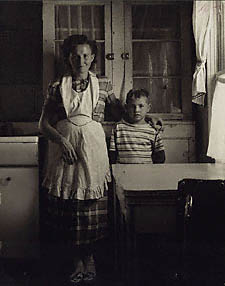
 |
 |
Young Mother and Son, Gunlock, Utah, 1953
© Oakland Museum of California, the City of Oakland
|
 |
 |
After recovering from nearly seven years of ill health and diminished energy, in
1951 Lange proposed to the picture magazine Life that she and photographer
Ansel Adams do a project in Utah. Their purpose was to record the inhabitants, built
environment, and surrounding landscape of three towns in southwestern Utah settled in
the mid-nineteenth century by Mormons. The grandchildren of some of these pioneers
were Lange's subjects during her visit to Gunlock, Toquerville, and Saint George in
1953.
|
 |
 |
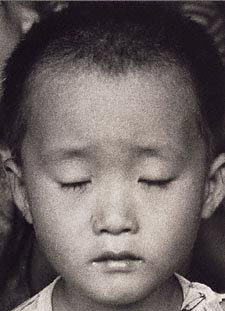
 |
 |
Korean Child, 1958
© Oakland Museum of California, the City of Oakland
|
 |
In the late 1950s Lange had a chance to travel with husband Paul Taylor, who
frequently visited developing countries as a consultant on agricultural and community
resources. She made several official trips with him, touring Asia, South America, and
the Middle East. These trips helped Lange realize her long-delayed desire to see the
world and to create pictures that contain the essence of what she called "a visual life."
|
 |





